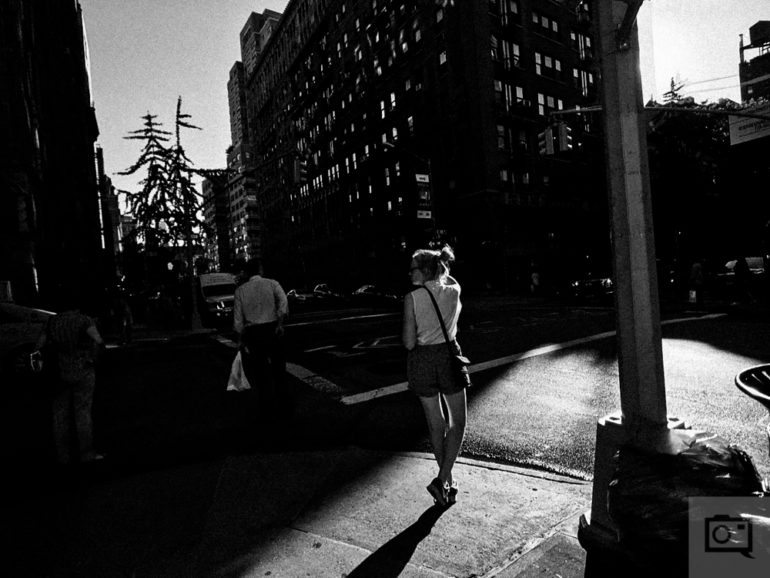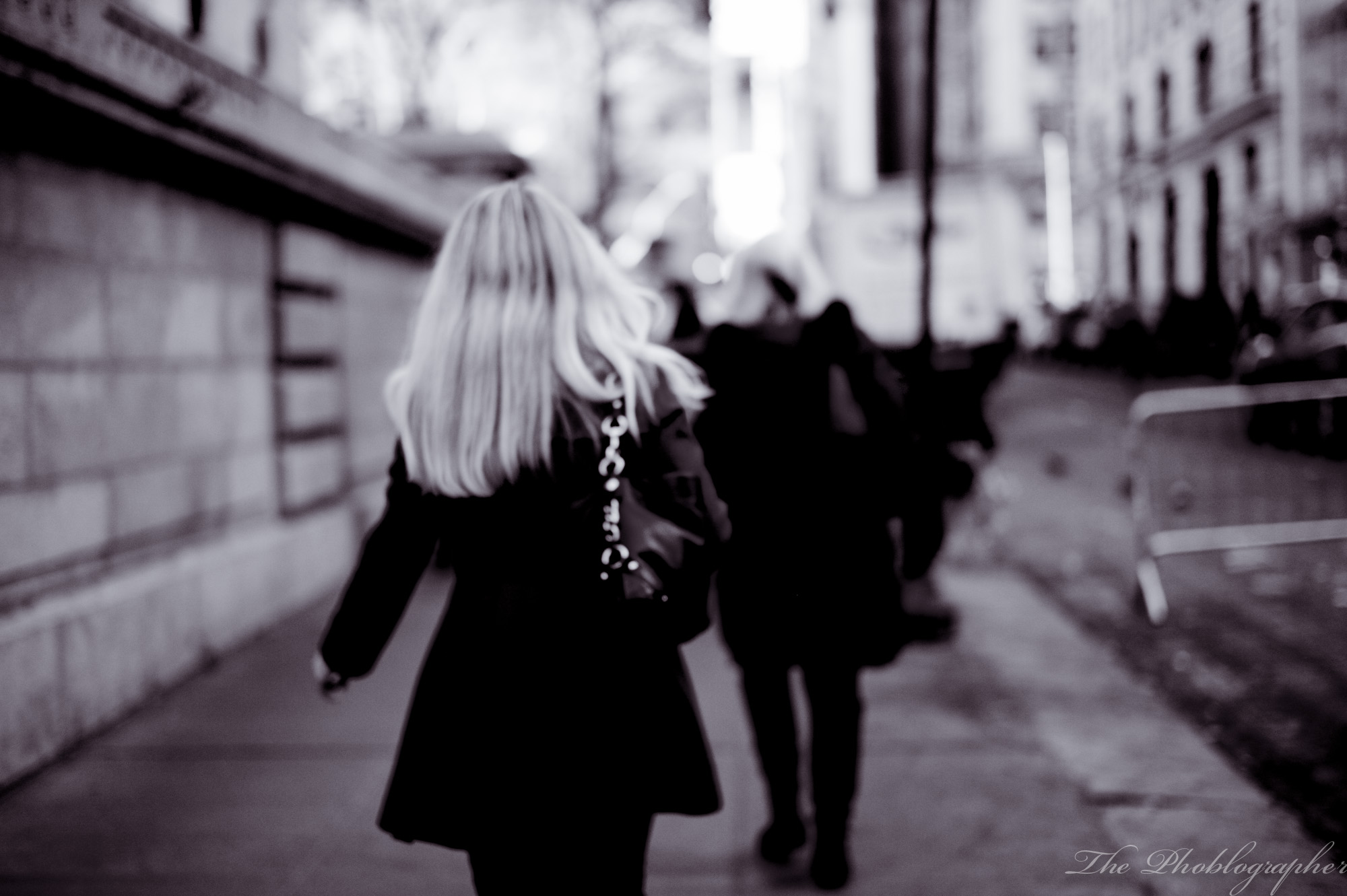Last Updated on 07/19/2018 by Mark Beckenbach
In street photography, you should really check your intentions.
I once was told by a man as enamoured with street photography as I that he admired a photo of a lone woman in a park looking away at something. “I wonder what she’s looking at,” he said. “She’s sort of really fixated on something.” Whatever she may have been fixated on, a part of my mind wondered what the hell he was talking about. In the most abstract sense of the image, it was nothing more than just a woman staring off at something, perhaps watching her kid/pet run around, waiting for someone to catch up, or just standing there. It was the mind that went somewhere else, and as far as how the image was shot it didn’t seem like the photographer really cared so much about her expression as he did just the fact that there might have been a slight sense of attraction.
I have seen and been pitched similar photos before. There was a time when I was pitched an entire series of peoples’ backs on the street as they walked away with a note from the photographer saying that he completed this series in wonderment of who they were.
Now let’s admit something; everyone has shot this stuff. But not everyone uses the shots as mainstay portfolio pieces. This is far different from taking photos of people from behind to check your zone focusing or for practice when the real thing you want comes around. Instead, when it’s done to women from behind, there is a sense of voyeurism about the scene. Sometimes I feel it’s due to an attraction to the woman photographed, but with an equal part of shyness preventing the photographer from going up to and talking to them as the world is moving on. For the modern street photographer, I urge you to try harder and to strive to make better images that not only push you, but also push yourselves to be better than others.

With all of this, I want to harken back to a piece I wrote a long time ago about intentions and street photography as it pertains to photographing children. Children, for many street photographers, is a territory most won’t go due to fear of how the photographer will be treated. But in the piece, I argued a different ethic:
Before you attempt to take a photo of a child in public, you should ask yourself a couple of key questions. For starters, ask yourself what your intentions are. If they are in any way voyeuristic, then stop. Stop right there and don’t even think about taking the image. But if you genuinely love the scene, the lighting is just right, the emotions on the child’s face are wonderful and genuinely elicit a feeling, and you are documenting a very human moment, then by all means go ahead and press that shutter button. Again, this all has to do with your own intentions.
This same ethic I think should be applied to everything you do as a street photographer. Your intentions should always be checked. If what you’re doing is in any way predatory, then you need to put the camera down. If there are genuine and good intentions before you pick up the camera and put it to your face, then please proceed to continue making frames. This ethic should apply to the treatment of everyone, not only children. If there is a genuinely great reason why you’re photographing a pretty woman from behind, then do it. If there is no genuine reason, then please stop. It’s bad for all of us.


